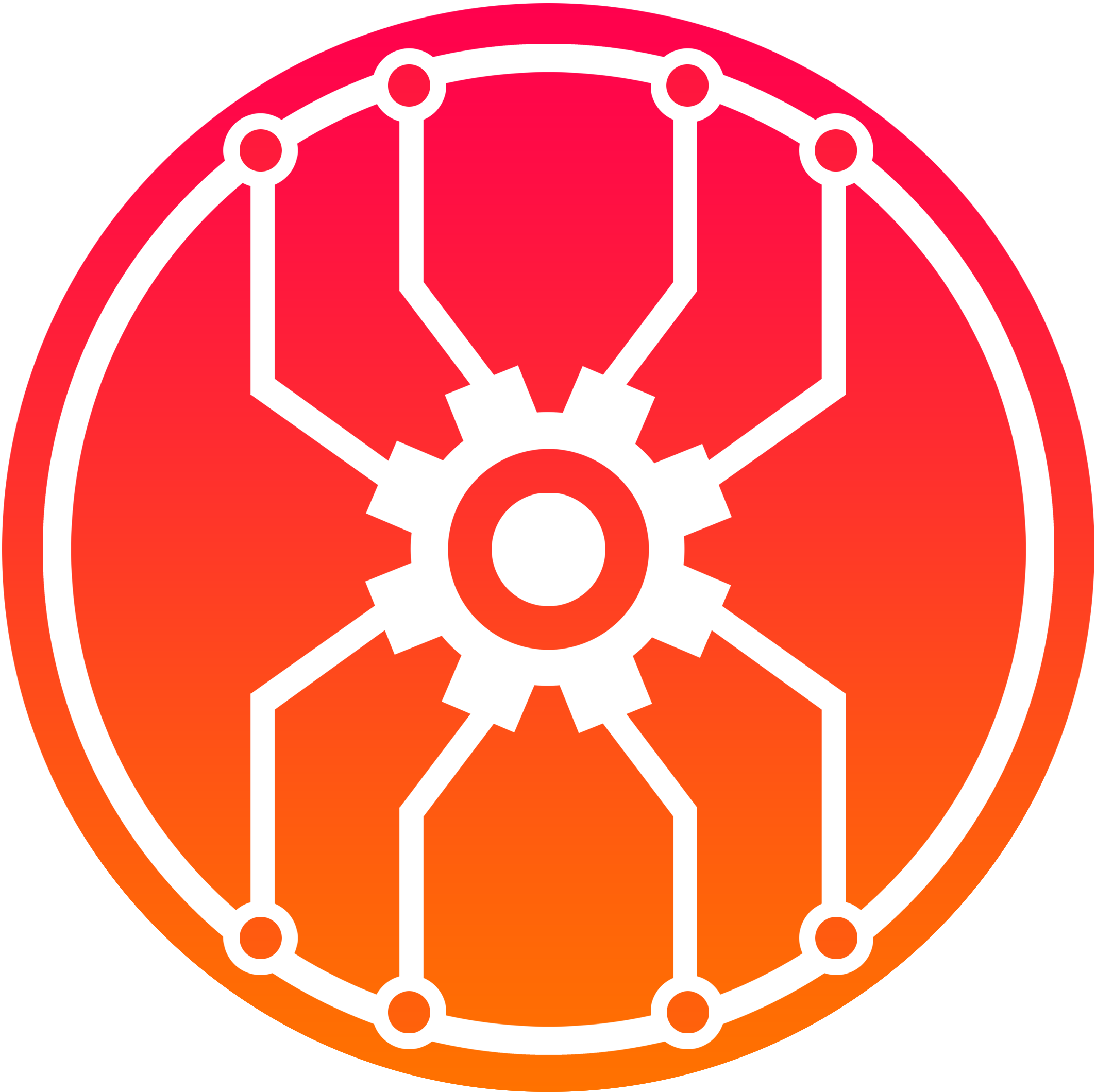We came together as a team for the first time! Our supervisors, Stefanie Frank and Vitor Pinheiro, introduced themselves and we explained our motivation for joining iGEM. John Ward gave a brief presentation on the use of phages as scaffolds.
We discussed the following topics during our weekly meeting:
a. Expectations: students, advisors, staff. This was the basis of a code of conduct within the team.
b. Competition – medals, criteria, deadlines, templates, streams and freebies. This was the basis of our project discussions and timetabling.
c. Context – past teams, past successes and issues. This was used to calibrate multiple aspects of the team work.
Vitor Pinheiro presented his research on XNA and introduced us to some core concepts in Synthetic Biology.
Jo Santini from the Department of Microbiology talked to us about her research on Rhizobium NT-26. Its ability to metabolise arsenic can be used to detect arsenic in drinking water. According to the WHO, 140 million people over 50 different countries are affected. This talk inspired us to focus on heavy metal contamination and the need to purify drinking water.
In order to be more productive we started splitting our team into specialised roles according to our skills. These include:
1. Molecular Biology - Eloise, Catherine, Stefanie
2. Modelling - Pengli, Stefan, Catherine
3. Entrepreneurship and collaborations (incl. outreach) - Giovanni, Matas, Viktoria, Agata
4. Marketing and Website (incl. social media) - Daniel, Jacopo DC, Jacopo G
After a few weeks of brainstorming project ideas we had narrowed it down to two options: heavy metal filtration or electric genes. Through a final vote we decided to work on a project on rare metal recycling (however idea changed over the following weeks).
We applied for two official iGEM sponsorships, GenScript and Promega, to provide us with funds for wet lab products. Dr Pinheiro gave us a much needed crash course in cloning techniques including Golden Gate, Gibson assembly and the Biobrick standard.
We set up Benchling as our main data management platform for wet lab aspects and started planning our cloning protocols. A lot of research was required to learn about the use of bacteria in metal recycling.
Dr Brian O’Sullivan, Department Safety Officer in Biochemical Engineering, gave us a safety tour around the building. After we also completed online courses on Basic Fire Safety and Principles of Laboratory Safety were finally allowed to enter the lab!
We secured GenScript’s sponsorship! This will be very valuable for our constructs once they are ready. While we were looking for a suitable scaffold for metal filters we read about spider silk for the first time. Its incredible mechanical properties and biodegradability convinced us to focus our project on it.
BMG and Eppendorf also became our sponsors! BMG’s plate reader will be used for our fluorescence measurements, and Eppendorf’s pipettes are everyone’s favourite. The wet lab team had meetings with Dr Pinheiro to finalise our constructs. Following our discussion last week about spider silk, Silk Engineered Technological Applications (SETA) was born.
After running into slight issues due to the repetitive nature of spider silk sequences, our constructs were finally ready to be ordered. The UCL Synthetic Biology Showcase took place on Wednesday, allowing us to hear about cutting edge research in this field. We also got a chance to present our project and gather feedback. Our conversation with a representative GenScript proved to be very helpful for our presentation skills.
Dr Michael Baron introduced us to GitHub and its basic commands. On Thursday we travelled to Oxford for the UK iGEM Meetup organised by SynBio UK. We learned about other team’s project and planned collaborations based on our strengths and weaknesses. Hearing a member of Imperial’s 2014 team Aqualose was particularly inspiring as their project is relevant to ours and proved to be successful. Through different workshops in safety and project planning we developed our idea further.
This week Catherine, Jacopo G and Stefanie started working on the InterLab study. We finished the calibrations and prepared reagents for the following week.
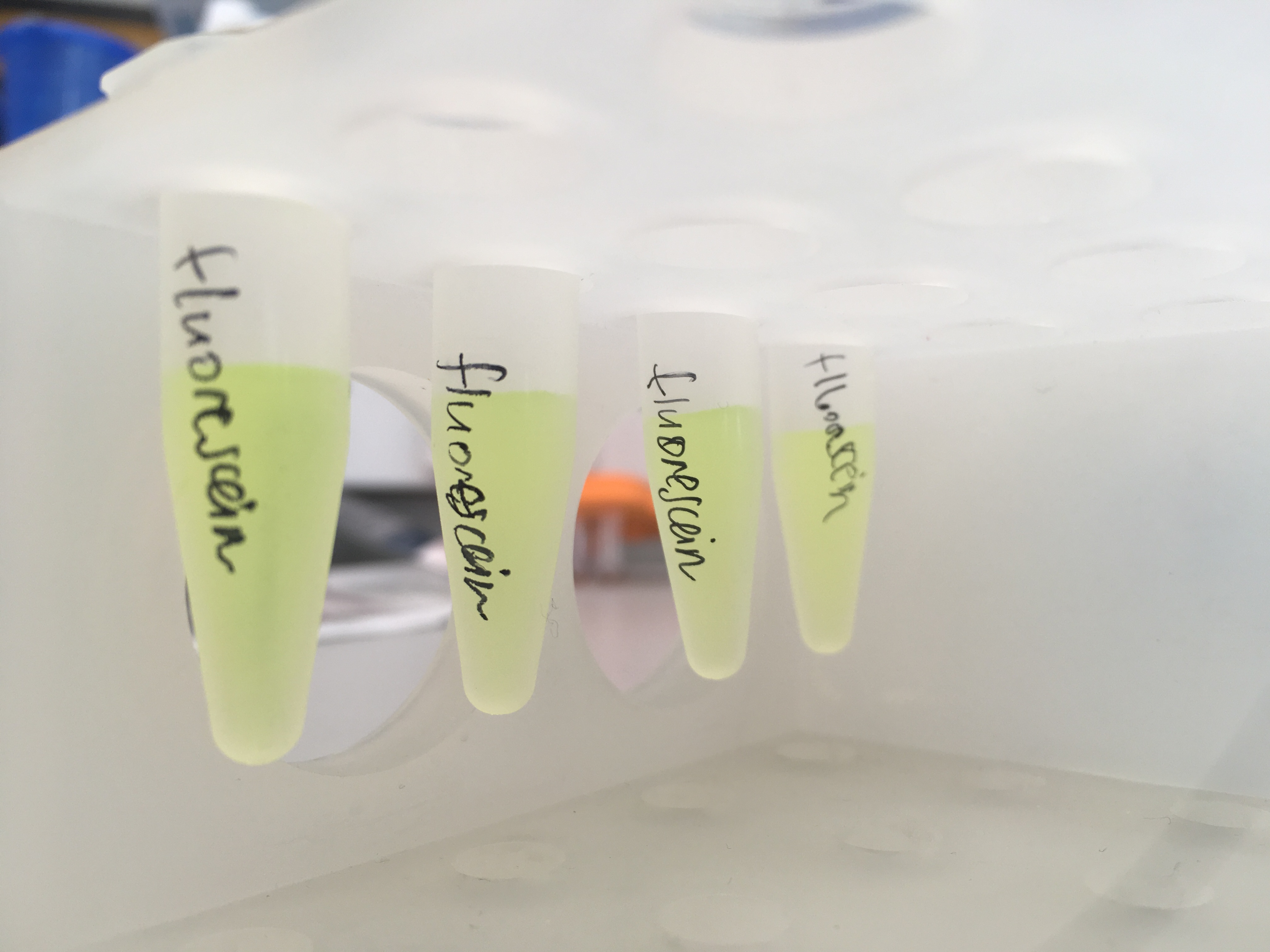
We met with Dr Chris Barnes for a modelling crash course. He explained how we can use our knowledge of kinetics to model reactions. Our modelling team started weekly meetings with him. We also discussed different applications of spider silk apart from metal filtration. Endocrine disruptors contaminating water is another problem we decided to tackle.
We transformed the constructs for the absorbance and fluorescence measurements. As our negative control failed to transform, the Westminster iGEM team was kind enough to give us a plate of their transformed colonies.
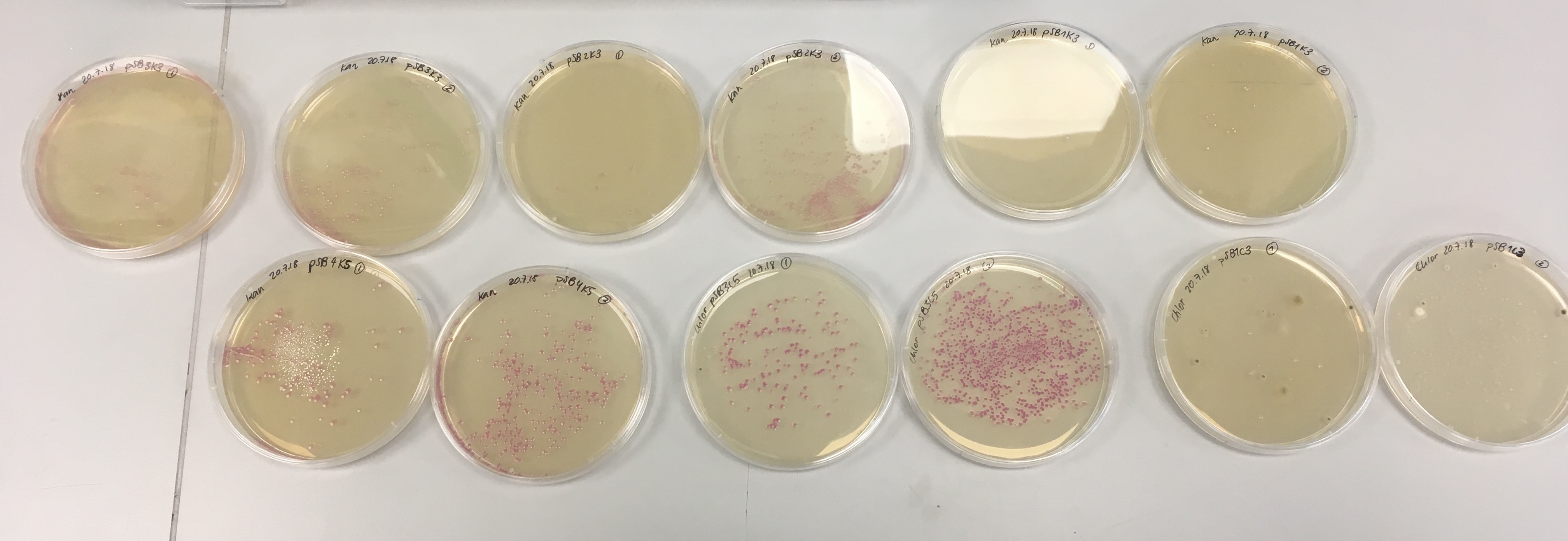
We created a Gantt chart to plan a few weeks ahead. Eurofins became our sponsor, their sequencing services will be crucial to our lab work.
After finishing the last Interlab experiment, we analysed the data and submitted it. The Interlab study proved to be a valuable experience as we practiced important techniques and became familiar with the lab. While we are waiting for our constructs to arrive we started preparing the iGEM standard backbones for our experiments.
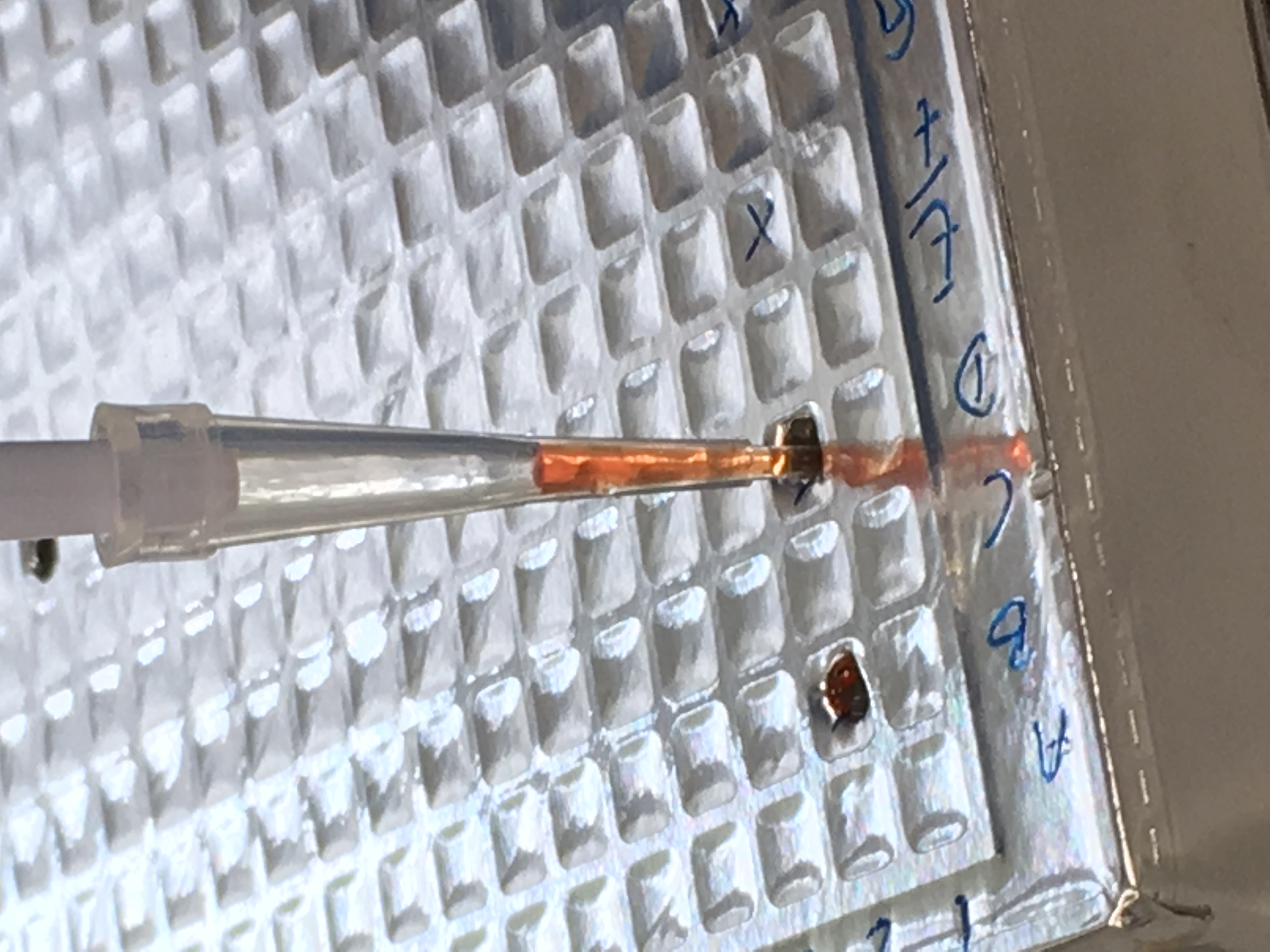
The outreach team had brainstorming sessions deciding how they can communicate science to the public in an effective manner. We had the idea of creating a DIY bioreactor and Matas started planning a design. Helsinki approached us as they are also working with spider silk and sharing protocols will benefit us both.
We digested the backbones with EcoRI and PstI and checked the plasmids with SYBR Safe on an agarose gel. Stock solutions of various buffers such as lithium acetate were prepared. We also started with the transformation of our construct, Final Brick, which allows flexible cloning with BioBrick, Golden Gate and Gibson. At the same time we amplified our constructs through PCR.
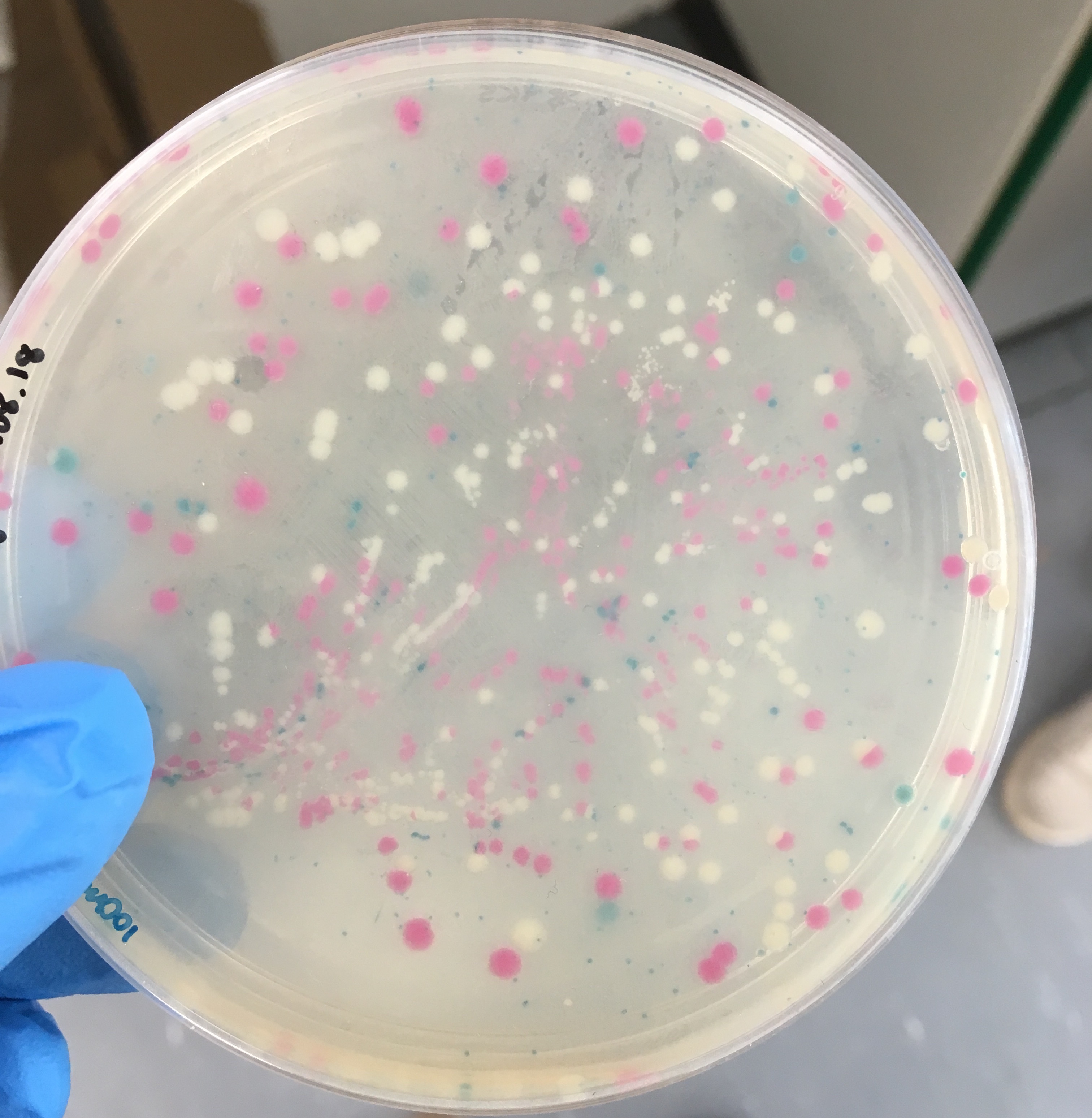
Our modelling team (Stefan, Pengli and Catherine) is working on a predictive model for spider silk properties and tested it with a supercomputer. Meanwhile the outreach team, including Giovanni and Jacopo G, created a informative podcast published on Loq. about biocontainment with a vocabulary suited for the general public.
In a joint team effort we cloned the Final Brick into all backbones through Golden Gate. In the photo below the blue-white screening can be seen. The agarose-gel electrophoresis of digested plasmids showed the Final Brick at the expected size. We picked blue colonies for sequencing and they were confirmed to be correct! This is a great success as it allows us to continue with the production of spider silk. There are various constructs we need to clone, some of which need to be assembled first.
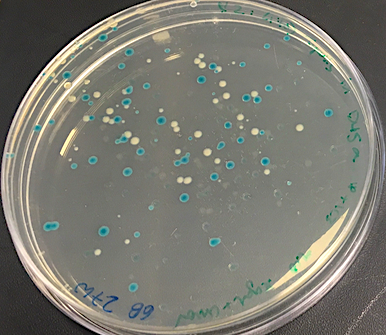
After various discussions with the London iGEM teams we agreed on the following events to address the most common concerns:
1. 16th September - Troubleshoot at KCL
2. 26th September - Discussion Panel at Imperial
3. 20th October - Mini-Jamboree
The Mini-Jamboree will be a chance for us to give feedback to each other in preparation for Boston.
As our PCR assembly of Spidroin Scaffold Part 1 and 2 did not work last week, we tested out different out different conditions by varying the amount of template, the elongation time and the volume of GC buffer. The results can be seen below, however the sizes are not correct and there are unexpected bands.
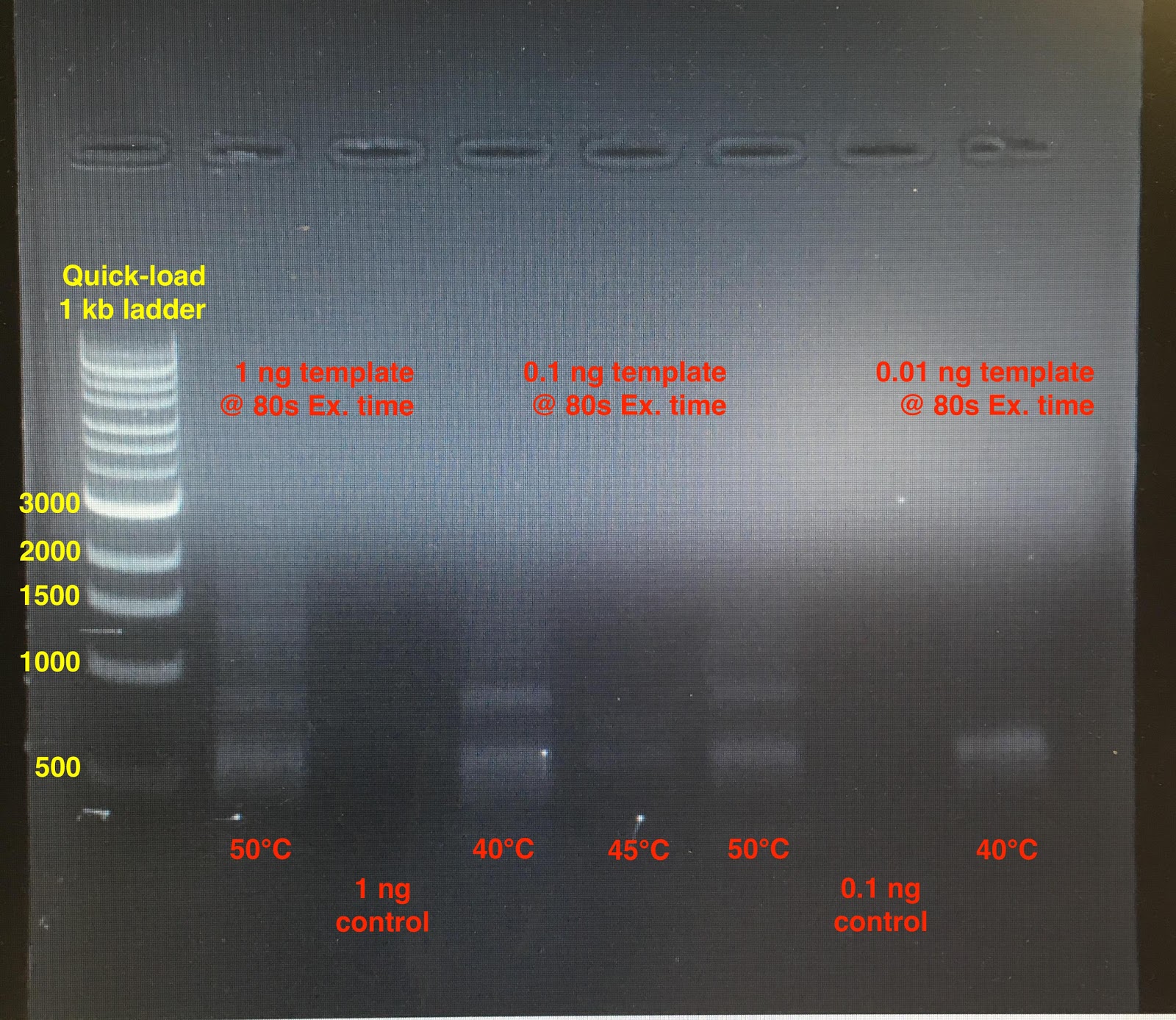
Matas and Giovanni collaborated with Dr Brenda Parker on the DIY bioreactor. Costs should be around 15£ and allow users to produce algae such as Spirulina with a solar-powered water pump. Daniel has been working on the design of the wiki and presented the layout of the homepage to us.
Our PCR assemblies of spidroins have been unsuccessful so we started focusing on Gibson Assembly. We used 50 ng of vector and 150 ng of insert as recommended by NEB for a 3-fragment assembly and transformed the ligated product into E. coli DH5α. As seen on the gel below, the N and C terminus of spider silk seem to have been cloned. The second gel shows the spider silk spidroins, only SS2C4 has the expected size. During our meeting we discussed the difficulties in assembly and decided to order complete g-blocks instead.
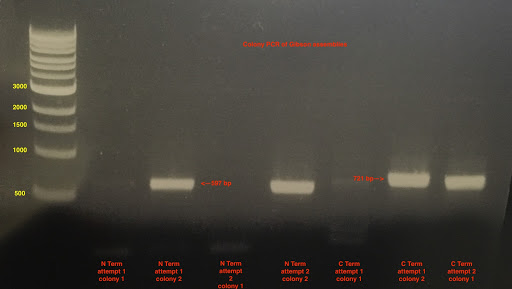
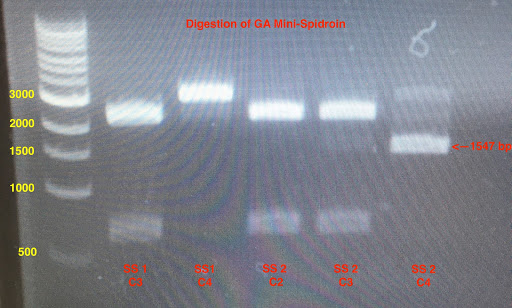
We brainstormed some ideas to take our art focused public engagement further. Giovanni also wrote a first draft for Kinesis magazine, an art science magazine at our university.
In preparation for the protein work, Jacopo G started writing the required protocols for protein expression, purification, and techniques such as SDS page. For the characterisation of our BioBrick2.0 we compared the efficacy of Golden Gate, BioBrick assembly and Gibson assembly by counting the CFUs.
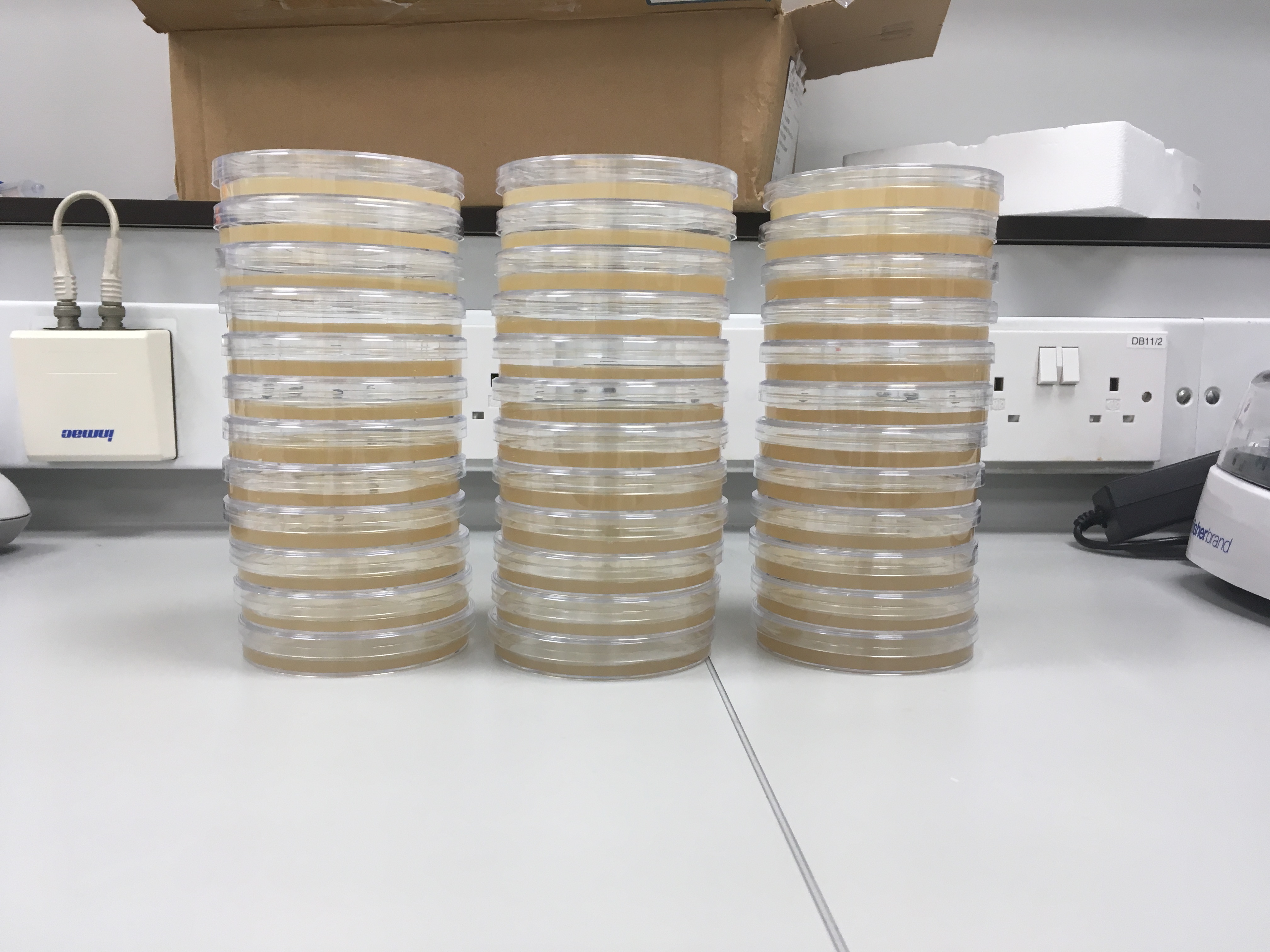
Giovanni and Viktoria have been in contact with the Instagram account @the_art_competition to create an art competition about biology. This goes along with our psychological study about the engagement of the public in science through art. Furthermore, the Kialo Debate is live! It is being shared with GMO activists and social media. We raised the question “Should genetic engineering be easily accessible to the public?” and also received over one hundred responses on our Facebook page. Matas and Agata finalised the Safety Form and submitted it.
In preparation for the g-blocks to arrive we prepared stocks of backbones containing the BioBrick2.0 construct.
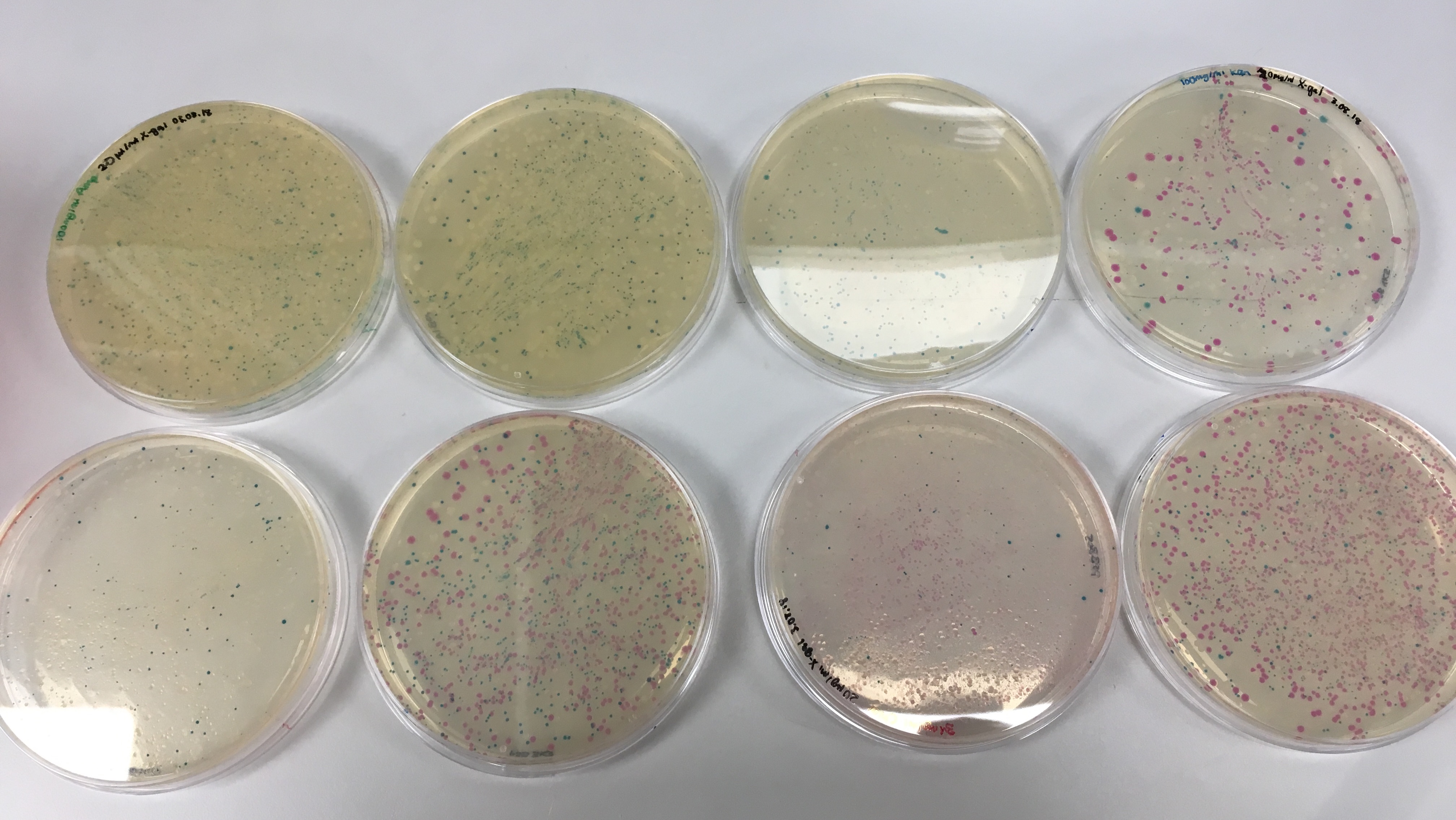
Giovanni talked to the CSO of Bolt Threads about spider silk and our project. Bolt Threads is a pioneer in the commercialisation of spider silk and offered us valuable insight into their experience. They highlighted the importance of biomaterials and that alternatives to spider silk such as collagen are equally useful. We discussed this during our weekly meeting and decided to focus on the polymerisation and functionalisation of biomaterials. This is possible through our GFP and RFP constructs flanked by inteins as well as our “Intein Passenger”. We also had a discussion with Dr. Chris Myers about his research in genetic circuits. He brought up the importance of modularity in Synthetic Biology, which further encouraged us to change the direction of our project. Together with Yelena Petrovskaya, a UCL psychology student, the data from the psychological study was analysed using ANOVA.
Based on our discussion with Bolt Threads, we focused our effort into our intein RFP and GFP constructs. We tried different methods simultaneously. As it can be seen from our gel, our initial Gibson Assembly gave very smeared bands. The bands were excised however they resulted in very low DNA concentrations which could not be used. We also attempted a cell-free expression of RFP which did not work.
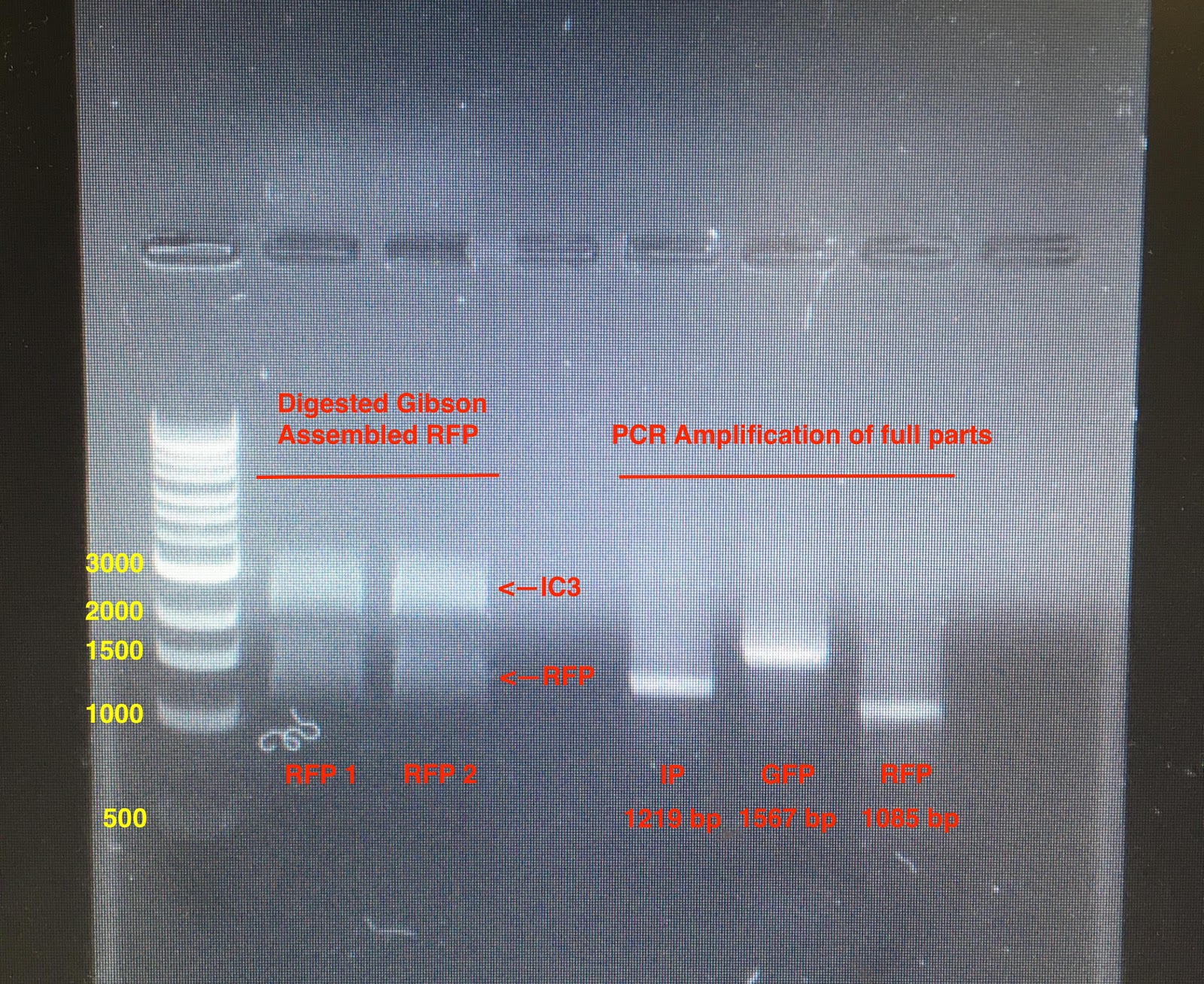
We went to Open Cell to approach some start-ups. The ones which inspired us, and were most relevant, included WASE-tech and IndiCo. WASE is working on water filtration, they told us about their vision to use bacterial biofilms in the future to clean water in a natural manner. Alternatively, IndiCo was developing bacterial patterning of clothing. The pigment was patterned onto the textiles, this made us wonder about whether chromoproteins could be used to functionalise spider silk and apply colour directly.
As we are having some issues integrating our animations into the Wiki format we contacted Florin, team member of UCL’s2017 iGEM team, to help us.
This week we also had our great London collaboration with other universities. We troubleshooted with King’s College, Imperial College and Westminster.
Gibson Assembly of RFP, GFP and Intein Passenger were successful! They were transformed into DH5α, mini-prepped, digested with BsaI and the results can be seen below. The bands correspond to the correct sizes of our GFP, RPF and Intein Passenger constructs and the samples were sent for sequencing. The sequencing results for RFP and Intein Passenger came back positive, however GFP contains an additional sequence in between part 1 and 2.
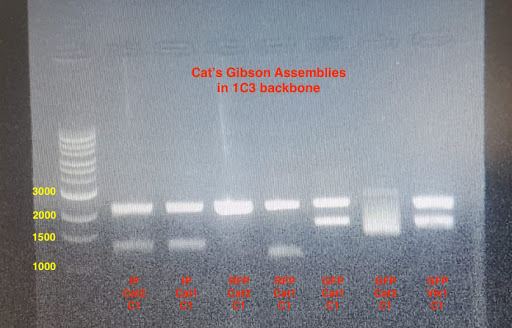
We completed writing up the white paper for the psychology study and converted it into a pdf.
Pengli, Jacopo G and Eloise focused on protein work whereas Catherine and Stefanie continued cloning.
Protein
Our RFP, GFP and Intein Passenger plasmids were transformed into E. Coli BL21 for expression. As seen in the photo below, the expression was successful. They were induced with 400 μM IPTG when OD reached 0.6. Expression was done overnight at 25˚C and 37˚C to test for optimal conditions. Some of our 50 ml LB overnight cultures were contaminated and had to be repeated. Fluorescence was measured using our BMG plate reader.
The cells were sonicated, and the proteins purified and run on an SDS gel.
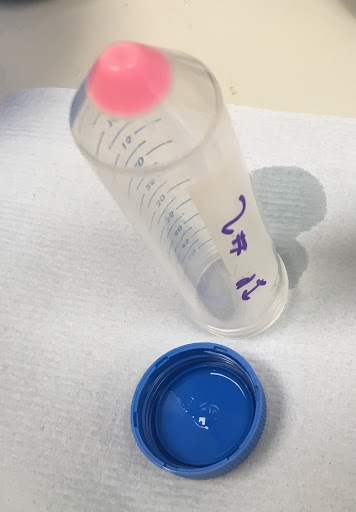
As the Intein Passenger is ready we can start cloning in our nickel binding peptide (NikR) and our estrogen binding peptide (ER). We first amplified them through PCR, as seen on the first gel. Another attempt of GFP cloning gave the second gel; it looks like GFP2C1 (colony 1) could have worked.
To compare our improved mScarlet-intein BBa_K2842669 construct to Heidelberg’s 2014 RFP-intein construct BBa_K1362101, we cloned their construct into BL21 cells.
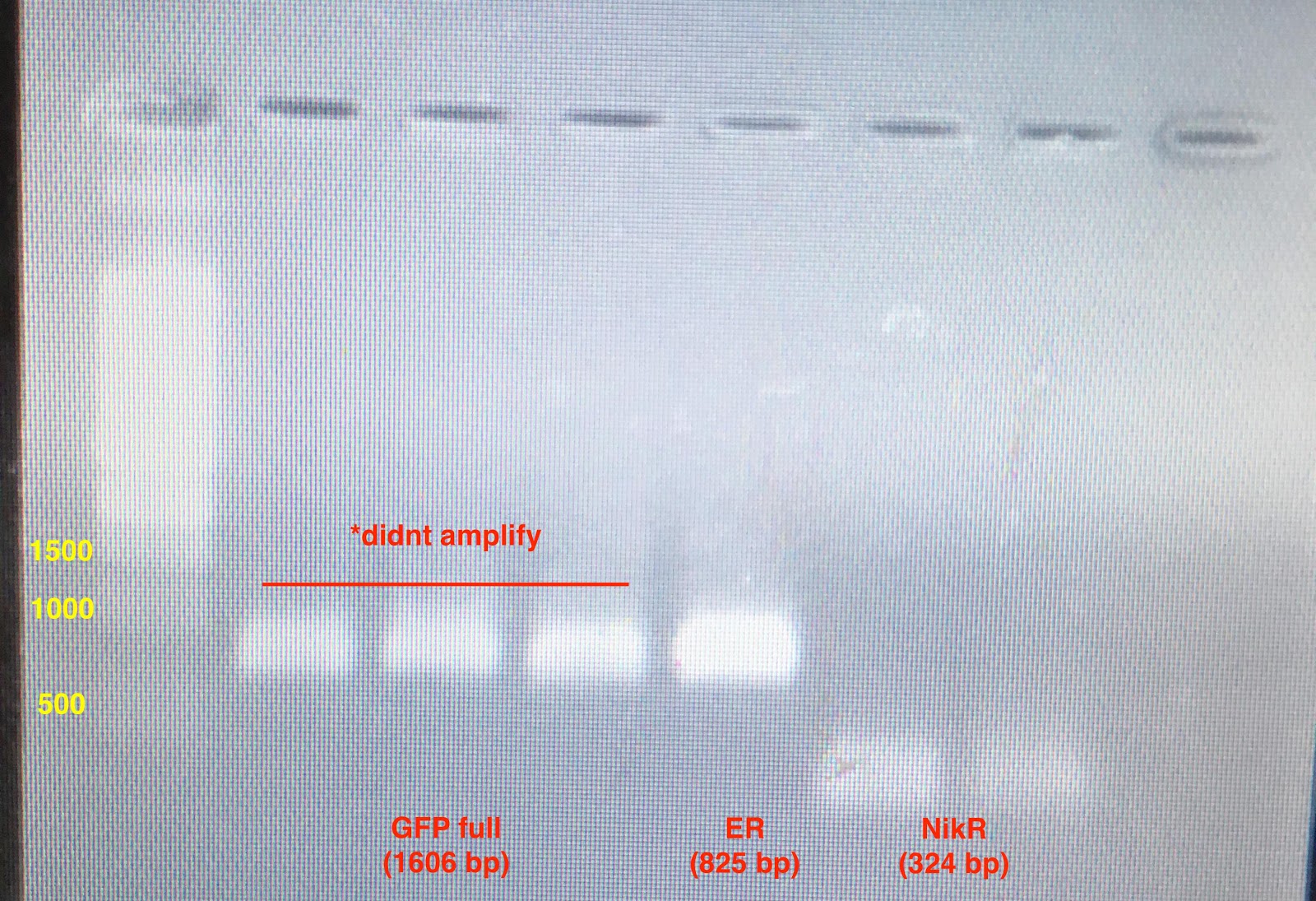
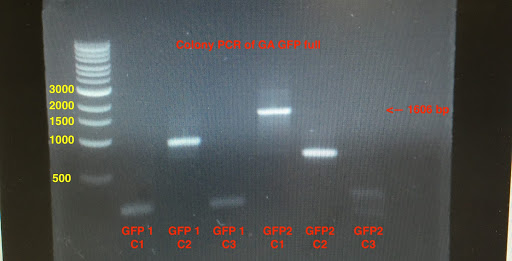
We started planning the art exhibition with the CSM artists and brainstormed ideas as to what could be used. We decided to break the project down into history, current applications and future applications of spider silk.
More fluorescence measurements were completed, comparing our Intein Passenger to Heidelberg’s construct.
Our new GFP Gibson Assemblies were sent for sequencing. A colony PCR of Intein Passenger containing NikR and ER gave a promising gel. These samples were also sent for sequencing and confirmed to be correct. Our constructs were prepared to be shipped to Boston.
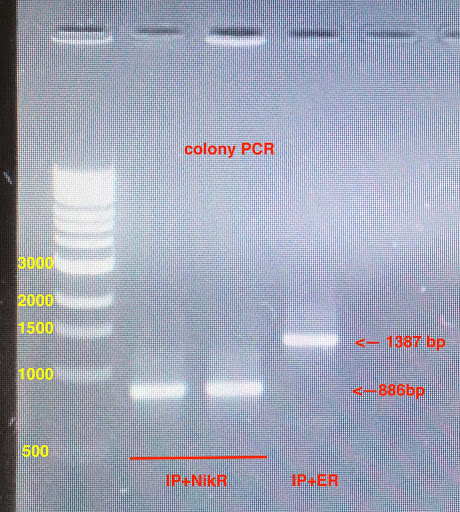
We talked with UAL students to plan an spider-related art exhibition. They utilised chemicals to simulate spider silk polymerisation.
Even more fluorescence measurements were completed, comparing our Intein Passenger to Heidelberg’s construct.
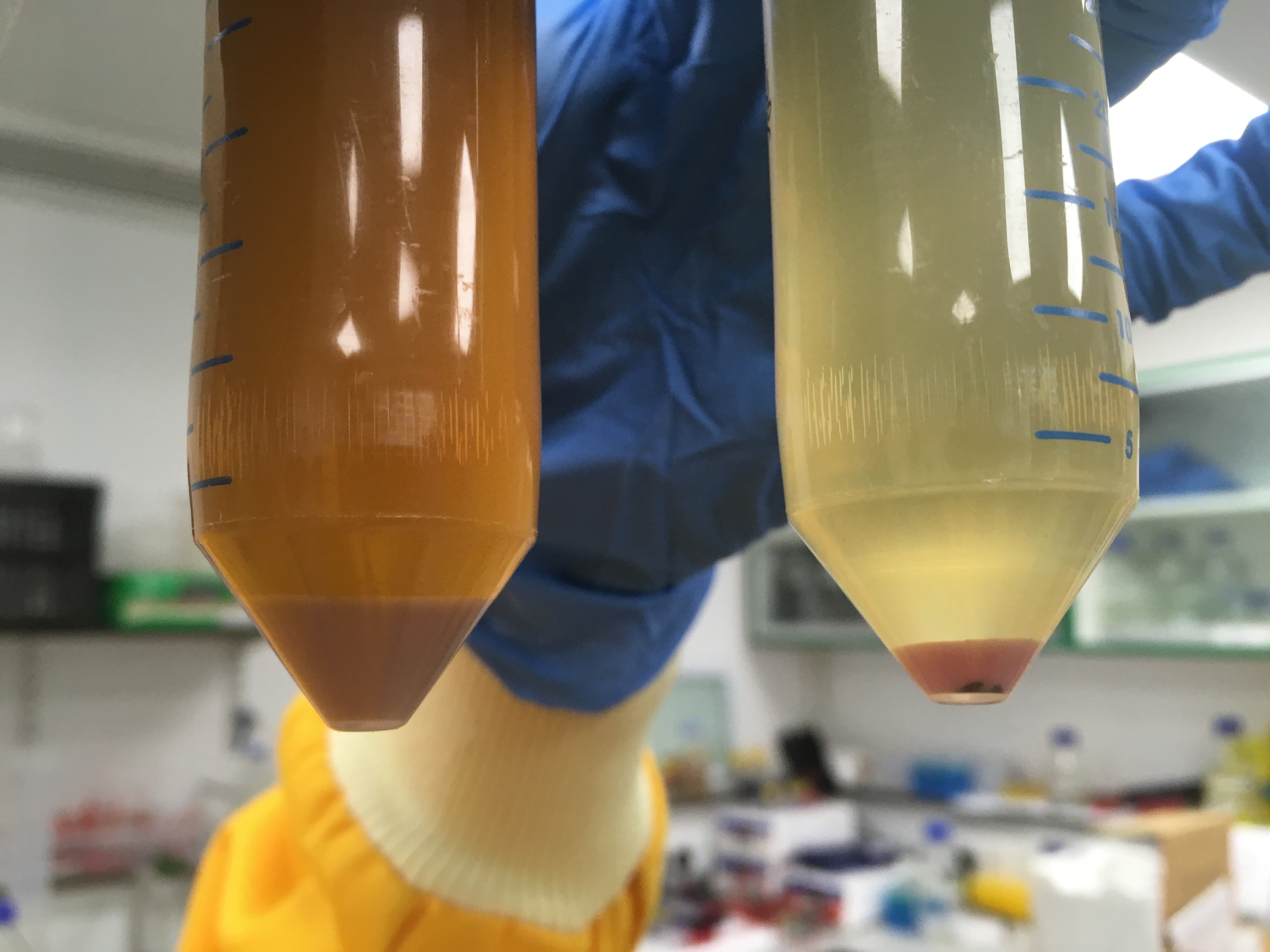
We finalised all the Wiki and BioBrick Registry content.
